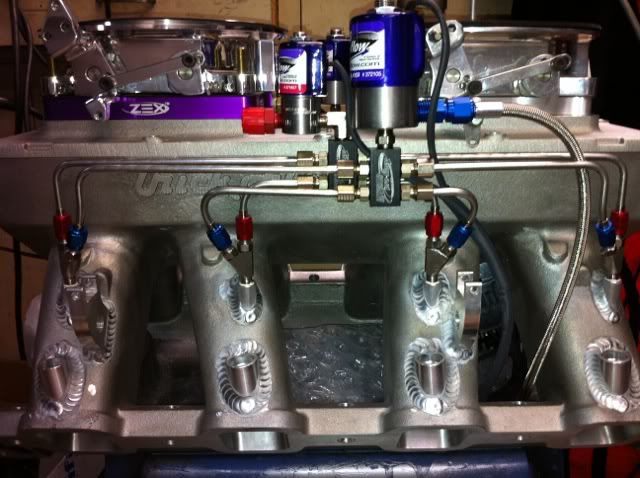Another most likely stupid question..
but, when you add nos to the intake charge it,because of it's temp. causes the air to contract and make it denser. this has a bigger effect with a fogger type system over a plate type that cools the charge as it's entering the intake, unlike the fogger that cools the charge after it's already in the intake ports..
will this affect injector spray pattern, and should the efi injector be before the fogger nozzle, or after it.. ?
As I'd think the nos injection point would as the air contracts at that point to pull the fuel from the efi injector towards the nos charge injection point, pulling it away from the intake valve if the fogger nozzle is above the efi fuel injector making any reversion even worse.. am I over thinking this.. or does placement even matter.. or at what point does it come into play?(i.e. 250 shot,400shot)
for this question it be bank/batch fire not sequential .. but does the answer change with different injection disciplines?
but, when you add nos to the intake charge it,because of it's temp. causes the air to contract and make it denser. this has a bigger effect with a fogger type system over a plate type that cools the charge as it's entering the intake, unlike the fogger that cools the charge after it's already in the intake ports..
will this affect injector spray pattern, and should the efi injector be before the fogger nozzle, or after it.. ?
As I'd think the nos injection point would as the air contracts at that point to pull the fuel from the efi injector towards the nos charge injection point, pulling it away from the intake valve if the fogger nozzle is above the efi fuel injector making any reversion even worse.. am I over thinking this.. or does placement even matter.. or at what point does it come into play?(i.e. 250 shot,400shot)
for this question it be bank/batch fire not sequential .. but does the answer change with different injection disciplines?


Comment